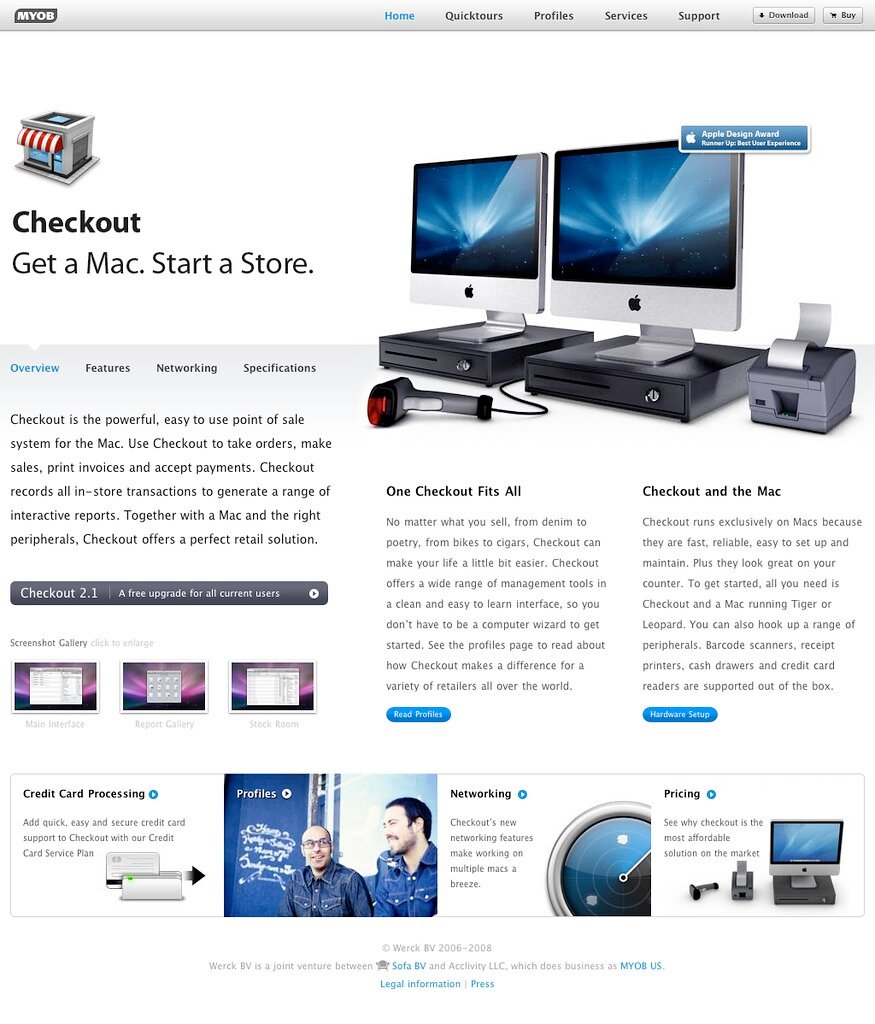Every online shopper has experienced the frustration of filling their virtual shopping cart, only to abandon it moments before checkout. These abandoned carts plague online retailers, leaving them struggling to understand why customers hesitate at the final hurdle. However, fear not, for in this article we delve deep into the realm of abandoned carts, unlocking the secrets behind their occurrence. Armed with insightful solutions, we aim to empower online businesses to overcome this seemingly insurmountable obstacle and achieve checkout success like never before. So fasten your seatbelts, as we embark on a quest to decipher the mysteries behind abandoned carts and equip you with the tools necessary to transform abandoned dreams into roaring shopping cart victories!
Table of Contents
- Understanding the Abandoned Cart Problem: Statistics and Causes
- Personalizing the Checkout Experience: Strategies to Reduce Cart Abandonment
- Optimizing Checkout Process: Proven Solutions for Increasing Conversion Rates
- Recovering Lost Sales: Effective Techniques to Re-engage Abandoned Cart Users
- Q&A
- In Retrospect

Understanding the Abandoned Cart Problem: Statistics and Causes
In the world of e-commerce, abandoned carts can be a significant headache for businesses. According to recent statistics, the average online store experiences an abandonment rate of around 69.57%, which means that almost seven out of ten potential customers leave their items behind before completing their purchase. This alarming rate begs the question: What causes shoppers to abandon their carts, and how can we tackle this pressing issue?
There are several reasons why shoppers abandon their carts, and understanding these causes can help businesses implement effective solutions. One common reason is unexpected shipping costs. Customers often get discouraged when they discover additional fees during the checkout process, leading them to abandon their carts. Another factor is the lack of trust. Shoppers may hesitate to proceed with their purchase if they don’t feel secure providing their personal or financial information. Site performance issues, such as slow loading times or technical glitches, can also frustrate customers to the point of abandonment. To combat these issues, businesses can consider the following solutions:
- Transparent Pricing: Clearly display all costs upfront, including shipping fees, taxes, and any other applicable charges, to avoid surprises at checkout.
- Build Trust: Enhance customers’ confidence in your website by including trust signals, such as security badges, customer reviews, and clear privacy policies.
- Optimize Performance: Ensure your website is optimized for speed and user-friendliness. Minimize any potential barriers that may cause frustration during the checkout process.
By addressing these common causes and implementing these solutions, online businesses can significantly reduce cart abandonment rates, increase conversions, and ultimately unlock greater checkout success. Remember, understanding the problem is the first step towards finding the right solutions to create a seamless and engaging shopping experience for your customers.

Personalizing the Checkout Experience: Strategies to Reduce Cart Abandonment
One of the key challenges faced by online retailers is cart abandonment, where potential customers add items to their carts but never complete the purchase. In order to address this issue, it is essential to personalize the checkout experience for each customer. By tailoring the process to their preferences and needs, you can greatly increase the chances of them completing the transaction.
Here are some effective strategies to reduce cart abandonment and unlock checkout success:
1. Simplify the checkout process: Streamline the steps required to complete a purchase, minimizing the need for customers to input excessive information or navigate through multiple pages. Consider implementing a guest checkout option for those who don’t wish to create an account.
2. Offer multiple payment options: Different customers have different payment preferences, so it’s crucial to provide a variety of payment methods such as credit/debit cards, PayPal, Google Pay, and Apple Pay. This flexibility can significantly increase the chances of customers following through with their purchase.
3. Utilize real-time inventory updates: Nothing is more frustrating for a customer than adding an item to their cart only to find out it’s out of stock during the checkout process. Implementing real-time inventory updates can help avoid such disappointment and prevent customers from abandoning their carts.
4. Personalize the experience: Leverage customer data to personalize the checkout process. For example, you can remind customers of items they previously added to their carts or provide tailored product recommendations based on their browsing history.
By implementing these strategies, you can create a personalized checkout experience that addresses common pain points and increases the likelihood of customers completing their purchases. Unlocking checkout success ultimately leads to higher conversion rates and increased revenue for your online business.
Optimizing Checkout Process: Proven Solutions for Increasing Conversion Rates
In the fast-paced world of e-commerce, a seamless checkout process can make all the difference between a successful sale and an abandoned shopping cart. As astonishing as it may seem, a whopping 75% of online shoppers leave their carts without completing the purchase. However, fret not! In this post, we will demystify the secrets behind optimizing the checkout process and provide you with proven solutions to boost your conversion rates.
1. Streamline the Checkout Steps: Simplify the user experience by reducing the number of steps required to complete the purchase. Minimize distractions, eliminate unnecessary form fields, and only ask for essential information. Remember, a convenient and efficient checkout process can help decrease cart abandonment significantly.
2. Embrace Guest Checkout: Don’t force your customers to create an account. Offering a guest checkout option removes potential barriers and allows users to swiftly make their purchase without the obligation of signing up. By giving them the choice, you’re eliminating unnecessary friction and increasing the likelihood of conversion.
3. Implement Trust Signals: Establishing trust is crucial when asking customers to share their sensitive information. Display security badges, SSL certificates, and trust seals on your checkout page to reassure customers that their data is protected. Additionally, highlight any industry awards, certifications, or positive customer reviews to instill confidence in your brand.
4. Provide Multiple Payment Options: Offer a variety of payment methods to cater to the personal preferences of your customers. Whether it’s credit cards, digital wallets like Apple Pay or Google Pay, or even installment options, diversifying payment choices can help reassure customers and increase their likelihood of completing the purchase.
5. Optimize for Mobile: With the increasing number of mobile shoppers, it is vital to ensure your checkout process is mobile-friendly. Optimize your checkout page for smaller screens, minimize scrolling, and streamline the steps to provide a seamless mobile user experience.
By implementing these proven solutions, you can experience a significant reduction in abandoned carts and a boost in conversion rates. Remember, a smooth, secure, and convenient checkout process is the key to unlocking checkout success in the competitive world of e-commerce.
Recovering Lost Sales: Effective Techniques to Re-engage Abandoned Cart Users
In today’s digital age, abandoned carts have become a common occurrence for online businesses. It is estimated that nearly 70% of users abandon their carts before completing the checkout process. However, despair not, for there are effective techniques that can help you recover these lost sales and re-engage with your potential customers.
One of the most powerful techniques to recover lost sales is by sending personalized email reminders to customers who have abandoned their carts. These reminder emails can be tailored to include a list of the items they left behind, along with a persuasive call-to-action encouraging them to complete their purchase. Additionally, you can offer exclusive discounts or limited-time offers to entice them further. Remember, the key is to make the content of these emails highly personalized and compelling, reminding the customers of the value they will be getting by completing their purchase.
Another technique to re-engage with abandoned cart users is by leveraging retargeting advertisements. By using tracking pixels and cookies, you can display targeted ads to these users on various platforms they visit after leaving your website. This serves as a reminder and keeps your brand at the forefront of their minds, increasing the chances of them returning to complete their purchase. Furthermore, you can make these retargeting ads even more effective by showcasing similar or related products, offering an extra layer of personalized recommendations tailored to their interests and preferences.
By implementing these effective techniques, you can unlock checkout success and recover lost sales from abandoned carts. Remember to always test and analyze the results to continuously optimize your strategies. With a little bit of creativity and perseverance, you can turn potential customers into loyal brand advocates and boost your online business’s revenue.
Q&A
Q: What is the significance of abandoned carts in the e-commerce industry?
A: Abandoned carts represent missed opportunities for businesses to convert potential customers into paying customers. They serve as a reminder of the challenges faced by online retailers in successfully sealing the deal.
Q: Why do customers abandon their carts before completing a purchase?
A: There are several common reasons for cart abandonment, including unexpected shipping costs, long and complicated checkout processes, concerns about payment security, and a lack of payment options. It’s crucial for businesses to address these pain points to minimize abandonment rates.
Q: How can businesses optimize their checkout process to reduce cart abandonment?
A: Businesses can enhance their checkout process by simplifying it – minimizing the number of steps required and removing any unnecessary information requests. Providing various payment options, ensuring transparent pricing, and offering guest checkout can also encourage completion.
Q: What role does personalized communication play in reducing cart abandonment?
A: Personalized communication can have a significant impact on cart recovery. Proactive measures like sending customized abandoned cart emails with enticing offers, providing assistance through live chat, or implementing remarketing strategies can help re-engage customers and nudge them towards completing their purchase.
Q: How can businesses build trust during the checkout process?
A: Building trust is vital to reduce cart abandonment. Implementing secure payment gateways, prominently displaying trust badges, providing clear return policies, and offering customer reviews can all contribute to establishing credibility, helping customers feel more confident in completing their purchase.
Q: Are there any technological solutions available to combat cart abandonment?
A: Yes, technology can play a crucial role in addressing cart abandonment. Businesses can leverage tools like exit-intent pop-ups, retargeting ads, and intelligent chatbots to provide personalized and timely assistance, enticing customers back to complete their purchase.
Q: How do mobile devices impact cart abandonment rates, and how can businesses adapt?
A: Mobile devices contribute significantly to cart abandonment, primarily due to poor user experience. Investing in responsive design, optimizing loading times, offering secure mobile payments, and implementing user-friendly interfaces can help businesses tailor their checkout process to suit mobile users and reduce abandonment rates.
Q: What analytics and metrics should businesses track to understand and improve cart abandonment?
A: Key metrics to monitor include abandonment rate, cart-to-checkout rate, and average order value. Additionally, tracking specific customer behavior, such as time spent on each step, form completion rate, and click-through rates, can provide valuable insights for identifying issues and taking necessary corrective actions to improve conversion rates.
Q: How important is post-purchase communication in reducing future cart abandonment?
A: Post-purchase communication is essential for building customer loyalty and reducing future cart abandonment. Sending personalized order confirmations, shipping updates, and requesting feedback can enhance the overall customer experience, increasing the likelihood of repeat purchases and reducing abandonment rates in subsequent transactions.
Q: What is the ongoing challenge of reducing cart abandonment?
A: Reducing cart abandonment is an ongoing challenge that requires businesses to continually reassess their checkout process, make necessary optimizations, and stay informed about evolving customer preferences. By addressing pain points and providing a seamless and user-friendly experience, businesses can mitigate abandonment rates and unlock the potential for higher conversion rates.
In Retrospect
In a world where online shopping has become the norm, the battle for checkout success rages on. We have delved into the depths of abandoned carts and explored the crucial solutions that can unlock the gateway to consumer satisfaction. From understanding the psychology behind cart abandonment to implementing cutting-edge technologies, we have unveiled a plethora of strategies that can revolutionize your online business.
Remember, every abandoned cart represents not just a lost sale, but also a lost opportunity to nurture customer loyalty. By acknowledging the hurdles and implementing the right solutions, you can transform hesitant shoppers into loyal advocates of your brand. So, bid farewell to the days of abandoned carts haunting your e-commerce dreams, because with these practical solutions, you are on the path to checkout success.
In conclusion, the power to overcome abandoned carts lies in your hands. The strategies we have outlined may require effort and investment, but the returns in terms of increased conversion rates and customer satisfaction are well worth it. It’s time to unlock the doors to checkout success and embrace a future where every abandoned cart is transformed into a completed purchase.

